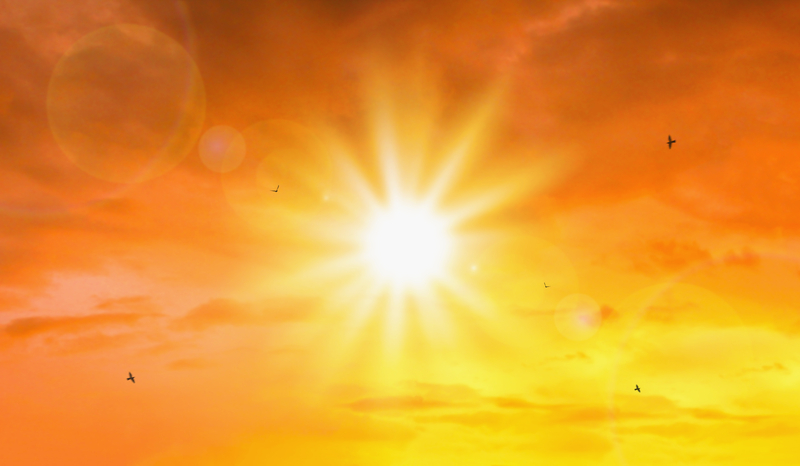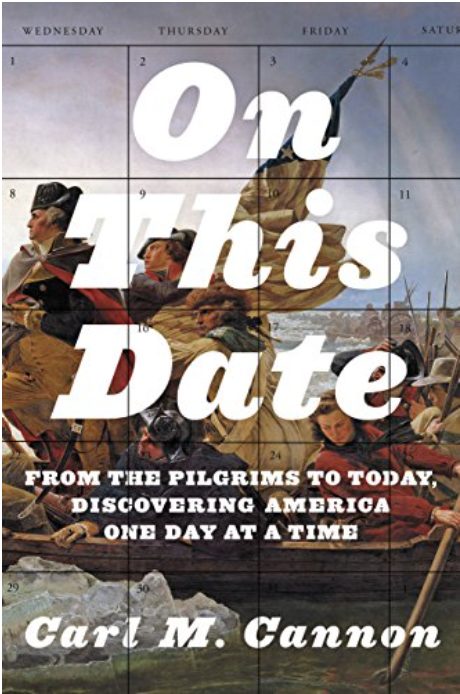Great American Stories: Heat Wave

Today, we tend to think about "climate" change when we contemplate extreme weather, but whatever you call it, this is bad. It's not entirely new, however. Tweet

Today, we tend to think about “climate” change when we contemplate extreme weather, but whatever you call it, this is bad. It’s not entirely new, however. As I wrote five years ago during a stretch of difficult weather, on this date 125 years ago, the Washington Evening Times ran a banner headline: “Sun Is Slaughtering the People of the Great Cities.” Newspaper readers in the nation’s capital knew it was hot — this was the 17th consecutive day of a fearsome heat wave — but this story revealed the vast geographical extent of the deadly weather. The lethal “hot wave,” as it was called, was causing suffering and death the length of the Eastern Seaboard, and inland all the way to Chicago.
“All nature was languid almost to prostration,” The Washington Post had reported in the middle of the wave.
“Little Babies Will Die,” screeched the headline of a drug store advertisement in the Washington Evening Star. The product being advertised was talcum powder, which, as I understand it, is now being litigated out of existence. Those actually most at risk were otherwise healthy men of all ages who labored outdoors. These were the days before refrigeration, let alone air conditioning, and as the heat kept up day after day — with no relief at night — the effects were cumulative.
Two weeks into the ordeal, on Aug. 9, 1896, the Evening Star carried the account of a 55-year-old Civil War veteran named Thomas Kelly who became listless at supper time and, in his desperation, skipped dinner and downed a quantity of ice water. He was seized with stomach cramps and died that night.
“When Will it Stop?” the Evening Star beseeched in an Aug. 11 headline. Newspapers offered safety tips and other suggestions. These ranged from riding the open-air streetcars and wearing light clothing to avoiding strenuous exercise (which included walking too far and engaging in “political arguments”). This last suggestion was a reference to the spirited presidential campaign that year between William McKinley and William Jennings Bryan.
The weather finally broke in Washington, D.C., on the evening of Aug. 13, 1896, thanks to a series of sustained thunderstorms. A cooling front followed behind it, providing relief from Virginia to New England. To this day, no one knows the death toll of the great “hot wave.” No one did at the time, either.
Five years later, the Washington Post tried to piece the tragedy together in its annual Almanac. It noted that 2,038 deaths from sunstroke were recorded in the impacted areas, 1,461 of them in Boston, New York, Philadelphia, Baltimore, and Washington. St. Louis and Chicago contributed 310 deaths. Common sense dictates that the actual numbers were far higher, as the almanac authors noted.
How many of these deaths were preventable remains an open question. In New York City, conditions were especially unbearable: two weeks with the temperature at 90 degrees or higher, 90% humidity day and night, and dangerously still air. “No wind at all,” noted historian Edward P. Kohn, “so at night there was absolutely no relief whatsoever.”
On the crowded Lower East Side, people would try anything to escape the furnace-like effect of crowded apartments. Presumably because they feared the outbreak of disease, city officials did not lift its ban on sleeping in city parks.
“They took to the rooftops, and they took to the fire escapes, trying to catch a breath of fresh air,” added Kohn, who wrote a book on how the heat wave was experienced in New York, and its political ramifications. “Inevitably, somebody would fall asleep or get drunk, roll off the top of a five-story tenement, crash into the courtyard below and be killed. You’d have children who would go to sleep on fire escapes and fall off and break their legs or be killed. People [tried] to go down to the piers on the East River and sleep there, out in the open — and would roll into the river and drown.”
At least one high-ranking official, the 37-year-old police commissioner, was appalled by the city’s inaction.
He proposed giving away free ice to the poor New Yorkers packed in the city’s densest tenements — and then personally supervised its distribution. With only a small entourage he ventured into the dark alleys in the neediest neighborhoods and watched immigrant fathers chipping off chunks of ice and giving it to their young children to suck on. He witnessed the plight of the urban poor at closer quarters than most politicians did then — or do now, for that matter. It informed his views on progressive politics in general and immigration policy in particular. It also launched a political career that would take him all the way to the White House. His name, of course, was Theodore Roosevelt.
Carl M. Cannon is the Washington bureau chief for RealClearPolitics. Reach him on Twitter @CarlCannon.






